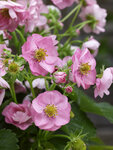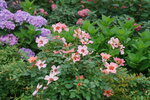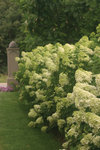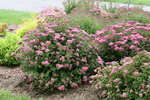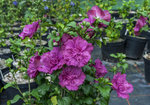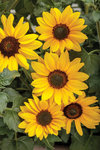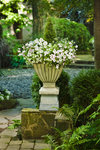ColorChoice Articles
Have you ever wondered what kind of flowers you can grow to eat? Check out this list of 10 best edible flowers from our collection.
Roses are obviously beautiful, but notoriously terrifying to care for. We introduce roses that are easier to grow and enjoy! We choose roses with good disease resistance, long bloom times, and self-cleaning natures (goodbye deadheading!). Your garden will look like it’s maintained by professionals. We’ve made a guide to help you garden with confidence and get the most out of your Proven Winners ColorChoice roses.
Could your spring garden use a little more cheerful color to ring in the new growing season? Scroll through this dozen new varieties of annuals, perennials and shrubs that will do the trick.
When you see a new Proven Winners® ColorChoice® shrub online or in your local garden center, you may not know everything it took for it to get there. That little shrub had to produce some pretty unique qualities to earn its place in a Proven Winners® white pot.
Spirea is one of the most commonly used landscape plants, and for good reason. This hardy deciduous shrub has captivating three-season interest, with a graceful habit, attractive foliage and flowers that bloom over a long time.
For a tropical look, even in cold climates, add rose of Sharon to your yard. This hardy flowering shrub has showy flowers that bloom from midsummer into fall, when most other shrubs are finished for the season.
Summerific® Hibiscus are showstoppers in the landscape, especially when they are in bloom, but every headliner needs backup singers. Here are 10 plants that make great companions for these robust perennials.
Bees are essential pollinators and gardeners can help sustain native bee populations by planting flowers that bees can feed upon. These 20 yellow annuals, perennials, and shrubs are good plants to incorporate in your bee-friendly garden.
Wondering if you should amend your soil when you plant? Our answer is no: we do not recommend adding anything to the soil when you plant one of our shrubs – no top soil, garden soil, potting mix, potting soil, compost, manure, or any other type of bagged or baled product out there.
White can be a great addition to any garden, but is especially important for gardens that will be enjoyed most often early in the morning and in the evening. White and silver plants tend to glow in the low light, while darker colors fade into the background. Using white can make your garden more inviting when the light wanes. These 27 container combination recipes use primarily white flowers, with a few light colors and the occasional dark color to round out the options.



